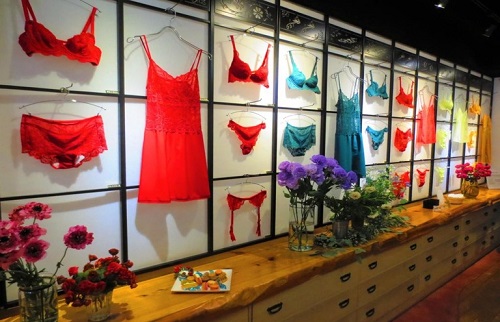FW
 COVID-19 crisis is likely to result in a $9 trillion loss for economies worldwide. Many developed economies like Germany, France, Italy, Spain, Great Britain and US and several nations of G7 may go into recession with chances of recovery from April 2021 onwards. These countries are fighting this deadly pandemic by coming out of the lockdown in a slow and sustained manner. In India, the government has allowed partial lifting of lockdown for various businesses in the Green Zone and restricted lifting in Orange Zone which will be followed by lifting of lockdown conditions on several other businesses.
COVID-19 crisis is likely to result in a $9 trillion loss for economies worldwide. Many developed economies like Germany, France, Italy, Spain, Great Britain and US and several nations of G7 may go into recession with chances of recovery from April 2021 onwards. These countries are fighting this deadly pandemic by coming out of the lockdown in a slow and sustained manner. In India, the government has allowed partial lifting of lockdown for various businesses in the Green Zone and restricted lifting in Orange Zone which will be followed by lifting of lockdown conditions on several other businesses.
To gauge the impact of lockdown on manufacturers, Lace n Lingerie conducted a survey among 300 manufactures of intimate wear, nightwear, loungewear, athleisure, men’s innerwear from Mumbai, Delhi, Tirupur, Coimbatore, Ghaziabad, Ludhiana, Bangalore, Kochi, Chennai etc. The survey was conducted from April 10-17, 2020.
Lingerie businesses to shrink by 60 per cent
About 50 per cent respondents opined their businesses will shrink between 21 to 40 per cent while about 25 per cent expected it to shrink by up to 60 per cent. However, around 20 per cent respondents did not expect the lockdown to impact their business in any way.
cent. However, around 20 per cent respondents did not expect the lockdown to impact their business in any way.
Around 3 per cent respondents expected their businesses to stablize within three to six months post lockdown, however 21. 5 per cent expected the recovery to come within three months. However, a majority of respondents, around 36 per cent, expected recovery in 6 to 12 months or more.
Brands to reduce staff and salaries
To tide over expenses incurred due to the lockdown, about 18 per cent stated they would try and reduce staff salaries while 11 per cent planned to reduce staff, travel, space and even marketing and branding expenses. They also planned to lower their rentals by up to 29 per cent.
Around 79 per cent respondents sought government support to maintain the current level of staff if the lockdown persisted further. Almost 63 per cent revealed cancellations to prior orders. However, 39 per cent did not mention any order cancellations, which augurs well for this sector recovering well before the other sectors of the garment industry.
Future bright as demand to rise
As intimate wear is a need-based functional item, the lockdown has also led to a huge rise in demand as people prefer to dress in loungewear, boxer shorts, bermudas, pajamas and basic bras and panties and underwear during this period.
Around 21 per cent view order cancellations to be a result of stock correction with distributors and retailers likely to reorder or perhaps order more from the same brand over more basic and VFM items. The survey revealed, consumers may defer purchasing intimate wear for a week or so but will definitely return to the market in times to come.
 Even before the spread of COVID-19, the fashion industry was facing an existential crisis due to its obsession with fantasy and exclusivity. Now, as health experts warn of a the second wave of the virus, many fashion players are yet to make plans to deal with the pandemic, though some have been replacing physical shows with digital ones, or kicking the can further down the road.
Even before the spread of COVID-19, the fashion industry was facing an existential crisis due to its obsession with fantasy and exclusivity. Now, as health experts warn of a the second wave of the virus, many fashion players are yet to make plans to deal with the pandemic, though some have been replacing physical shows with digital ones, or kicking the can further down the road.
Getting intimate with consumers
Pioneering this initiative, Kering-owned, billion-dollar brand Saint Laurent does not plan to stage any runway shows for the remainder of the year. Instead, the brand will showcase its clothes on a self-determined calendar. The brand plans to take control of its pace and reshape its schedule by showing collections outside the tightly organized Paris Fashion Week calendar and release advertisements in tandem with the collections’ arrival in stores. The brand’s approach includes encouraging a more lasting, less ephemeral attitude toward experiences and products.
Similarly, Hermès is emphasizing on the human aspect of its artisanal tradition by adding the names of its designers on its scarves. Brand ambassadors Naomi Campbell, Marc Jacobs, and Riccardo Tisci are using digital media to become more intimate with their audiences, making things that once took months to consider and arrange into now-daily occurrences. Though the brand plans to skip fashion shows this year, it still plans to advertise its collections.
Naomi Campbell, Marc Jacobs, and Riccardo Tisci are using digital media to become more intimate with their audiences, making things that once took months to consider and arrange into now-daily occurrences. Though the brand plans to skip fashion shows this year, it still plans to advertise its collections.
Being humane
For years now, celebrities have been skipping traditional press opportunities for social media which allows them to stage their own narratives and maintain optimum control. However, this adds to the pressure on brands to convince their customers that their products are worth the price. Consumers are already growing suspicious of brands that claim to do something bigger than make clothes. The key is to act humane, instead of like a human.
Rather than democratizing the industry, brands should attempt to personalize their offering, which spells a different kind of luxury for consumers. They should focus on not only on personalizing their websites but also adding a personal touch to their products on other social media channel that would ensure an enhanced shopping experience to consumers.
Sweden’s ACG Group has set up a dedicated new nonwovens fabric converting and single-use garment making-up plant in just three weeks.
The new plant was established to convert and coat the fabric and turn it into fully finished protective overalls for hospital staff each month. It now employs 80 staff in a two-shift operation and has been such a success that a second immediate order has been secured from the Swedish authorities. This will push production up to a monthly 1.8 million square metres of converted fabric turned into 692,000 finished medical garments.
In a fresh sign of the European Union’s ambitions to expand its green regulatory footprint around the globe, the bloc’s environment chief Virginijus Sinkevicius vowed to zero in on the apparel industry to ensure that it avoids using harmful chemicals and wasting water. Sinkevicius says the new draft EU rules will aim to require information on clothing labels about the resources used in manufacturing and set sustainability obligations for producers seeking access to the €500 billion European single market for textiles and apparel.
The EU announced in December an unprecedented “Green Deal” to become the first climate-neutral continent through an economic overhaul that will affect industries ranging from energy to agriculture.
The new “circular economy” initiative covers industries ranging from textiles and construction to electronics and batteries. It sets the stage for months of work by the European Commission, the EU’s regulatory arm, on detailed proposals that EU lawmakers would need to approve in a process lasting many more months. The portion of the plan dealing with textiles has the potential to affect numerous apparel companies that rely on low-cost Asian countries including China, Vietnam and Bangladesh as production sites.
It would be a further example of how the EU, the world’s most lucrative single market, deploys its rule-making authority to exert soft power over businesses across the globe. A previous landmark example of this occurred in the mid-2000s when, during three years of deliberations, the EU pushed through tougher chemical rules over the resistance of the industry and trade partners.
Sinkevicius says EU national governments would have to step up enforcement of any new environmental legislation covering the textiles industry to ensure the bloc’s credibility. He signaled that the future EU labeling framework for textiles would resemble decade-old European eco-design legislation for improving the energy efficiency of household appliances like refrigerators and televisions. These rules, which include labeling requirements, have helped cut EU electricity consumption by the amount of power that Italy uses annually.
China's Ministry of Commerce (MOC) has revealed that the 127th session of the China Import and Export Fair, also known as the Canton Fair, will exempt exhibition fees for enterprises. The 127th session of the Canton Fair will be held online from June 15 to 24. Exhibition fees will be waived to cope with the impact of the COVID-19 epidemic and help foreign trade enterprises to expand market and tide over difficulties.
The cross-border e-commerce platforms that participate in the fair-related activities will also be exempted from fees. The MOC has lowered the exhibition fees of the Canton Fair for many sessions to relieve pressure on firms and exempted booth fees for enterprises from poverty-stricken areas in recent years, saving over 2 billion yuan ($283 million) for enterprises.
Under Armour expects its second quarter revenues to decline by as much as 50 to 60 per cent as demand for apparel and goods remain low. The American sportswear giant reported worse than expected first-quarter losses and sales as its business continues to be hit hard by the pandemic. Due to store closures and lockdown measures, its revenue declined by 23 percent to $930 million, seeing a revenue decrease of 28 percent in North America and 12 percent in international business.
The brand’s shares fell by 8.6 percent to $9.13 on the stock market — in contrast, those of Nike fell by 0.9 percent and adidas lost 1 percent. Under Armour also reported a net loss of $589.7 million compared to a profit of $22.5 million recorded previous year.
The athletic apparel company will cut about $325 million n operating costs in 2020 to address challenges posed by the pandemic. As it looks to revive its business, the company could face $475 million to $525 million million in pretax restructuring costs — in the first quarter, it already recorded $436 million in restructuring and impairment charges.
Slyletica, an Australian fashion agency that makes activewear and athleisure brands, has seen an unprecedented rise in the number of people wanting to start an athleisure brand during COVID-19. Tracking firm Edited reveals tracksuit sell-through rate has increased by 36 per cent in the United States and the United Kingdom compared with the same period last year, and sweatpants sales were up 79 per cent in the former from February to April.
With people working and working out from home, demand for comfort particularly from US and UK continues to surge. According to the Business of Fashion sale of activewear garments increased 40 per cent in the United States and 97 per cent in the United Kingdom year on year during the first week of April.
While other sectors of fashion cancelled orders with their factories prior to the lockdown, many activewear labels are thriving and Slyletica is on boarding clients at a rate higher than ever before.
Slyletica is preparing to launch more than seven new influencer brands in the coming months and handles everything from design and manufacturing to e-commerce, marketing and order fulfillment, all from its Melbourne headquarters.
Real estate analytics firm CoStar Group estimates retail rents in the US will fall by 8-13 per cent post the coronavirus crisis. These rents have risen by 2.6 per cent over the last three years. As retail business came to a standstill in the months of March and April while some even continue into May, national retail chains in Europe and US are crumbling.
With most of them negotiating rent agreements with landlords or not being able to pay rents altogether, mall operators’ rent collections have hit rock bottom, casting doubt over the ability to sustain business. In April, the total rent collection for mall operators in US was only 15 per cent rent collection and the trend is forecast to fall further for May.
As many retailers like Macy’s and Tapestry struggle to reach common consensus with mall owners, the inability to meet the rent agreements has led to store closures all over the country. Retailers are of the view that rents have been riding too high in the recent past and in order to keep more stores from either leaving premises or closing down, mall owners will have to rethink their rent strategies.
As China resumes luxury spending, users on China’s popular social commerce platform Xiaohongshu believes brands need to seduce them with tantalizing entry-price baubles, or ramp up prices on more luxurious and iconic handbags.
Xiaohongshu users documented busy scenes in Chanel stores across China. According to the platform, the pandemic has forced luxury brands to close their stores in Europe and North America for nearly two months, and seen their share prices plummet, while retailers such as Neiman Marcus, J. Crew and True Religion have filed for Chapter 11 bankruptcy protection.
Luxury brands are implementing a mix of strategies to recapture the business they had lost. In addition to price hikes for best-selling core products, as Vuitton and Chanel did, brands like Dior, Gucci, Prada, Hermès and Vuitton are also doing major pushes of entry-level products with their China-focused campaigns.
Dior unveiled two local ambassadors for its beauty line last week: Actress Ziwen Wang as its cosmetics ambassador, and Jinyan Wu as the face of the Capture Totale skin-care line. Gucci and Prada, on the other hand, are going big on the 520 Chinese Valentine’s Day with a focus on classic styles and lower-price-point items.
Hermès and Vuitton are mixing both tactics. While shipping lots of rare Birkin bags to China, Hermès launched a WeChat mini-program store for 520. The program features products with more affordable price-point products such as silk scarves, belts, earrings, sandals, a Baby Hermy toy and a Kelly wallet available in four colorways.
Vuitton worked with China’s top livestreamer, Austin Li, to promote its fragrance collection on Xiaohongshu, as well as releasing a dedicated campaign later this week.
Latin American textile and apparel makers have urged the government to launch an aid package for ailing enterprises, substitute low-cost imported fabric for domestic alternatives and institute other actions to combat contraband and piracy. These businesses have been struggling to cut losses as US and European fashion brands cancel or postpone orders as the pandemic slows retail around the world.
Mexican banks are quickly curtailing lending to fend off a deep recession. When they do offer credit, they do so at prohibitive interest rates, Mexico’s government has demanded manufacturers shutter output but continue to pay workers while idle. And while makers can delay social security payments, they must repay them at a 2.5 percent interest rate once the crisis subsides, double the normal bank interest rates.
Suppliers in Central America are also suffering as hundreds of apparel makers serving the likes of Under Armour, Nike or Lululemon have closed shop, leaving production half staffed mainly because of a shift to make personal protective wear) or virtually shut such as in Dominican Republic, Nicaragua or Honduras. Most garment makers have given up on collecting payment for lost orders and will simply record the losses.
In Colombia, Grupo Crystal, which makes garments for companies including Chico’s, Zumba and Michael Kors, has received cancellations but is allowing clients to defer payments, said Jaime Sierra, who leads the company’s manufacturing plants in the city of Medellin.
Brazil retailers have been hit hard by strict lockdowns that are expected to last for two months. Designer Lenny Niemeyer, who makes bikinis and other beachwear for international department stores such as Bergdorf Goodman in New York, El Corte Ingles in Spain and Le Bon Marche in Paris, has lost up to $700,000 in international orders, nearly 50 percent of the $1.5 million it exports annually, and expects similar losses until the situation has normalised.












